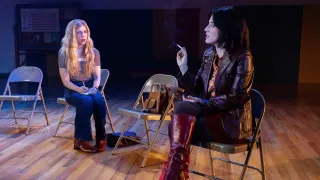June 22, 2016
Hurricane-Force Winds, Tornadoes Possible in Chicago
READ TIME: 1 MIN.
CHICAGO - Powerful storms could bring hurricane-force winds, tornadoes and baseball-sized hail to parts of the Midwest on Wednesday, including the Chicago area.
The Storm Prediction Center in Norman, Oklahoma, says areas around Chicago could see "explosive" storm development Wednesday afternoon. Forecaster Matt Mosier said tornadoes will be possible for about two hours in a triangle roughly from Davenport, Iowa, to Chicago to Milwaukee. Damaging winds are then expected across northern Indiana, southern Michigan and western Ohio.
In all, about 96 million people could see stormy weather Wednesday in an area stretching from southern Minnesota to the East Coast.
The National Weather Service in Chicago says widespread wind damage is possible with wind gusts of up to 80 mph expected. A flash flood watch is in effect through 1 a.m. Thursday.






